The 2008 Frye Art Museum exhibit, Heaven is Being a Memory to Others, provided a space for artists to present pieces about death, life and memory in conversation – particularly artists like Dario Robleto. The show was described as having deepened the contemporary artist’s “ongoing exploration of our yearning for immortality, as it might be seen from the perspective of lovers, artists, or soldiers.”
Dario Robleto was born in Houston, Texas in 1972. He received a BFA from the University of Texas at San Antonio in 1997 and then served as artist-in-residence at both the California Institute of the Arts in Valencia and the Frye Art Museum in Seattle.
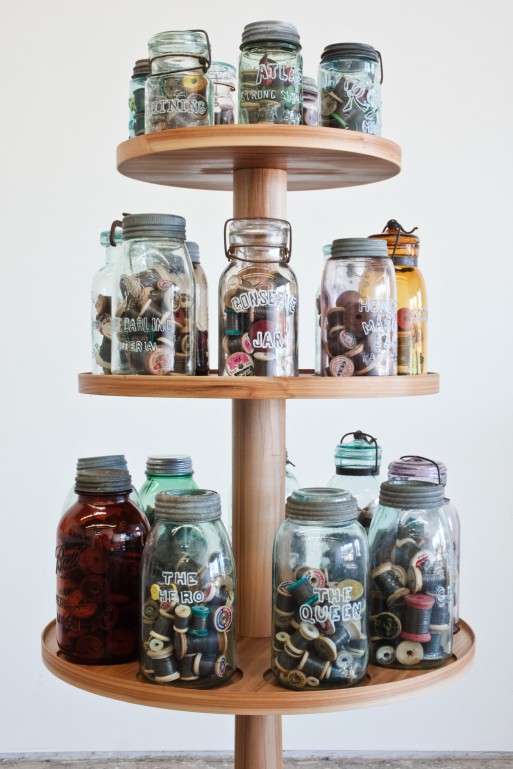
“The Minor Chords Are Ours” (2010). The minor chords from a family’s 60-year record collection were isolated to audiotape, stretched into thread, and spooled.
(Credit: Dario Robleto)
Heaven is Being a Memory to Others was hardly the artist’s first time exploring life and death through unique, curious mediums. What could a beat-up cassette tape, for example, have to tell us about death? In what universe can a collection of mason jars, wooden spools, and a Patsy Cline sleeve speak profoundly of our mortality? Robleto’s.
Consider the ‘cassette’. A work from 2002, it is made from “carved bone, bone dust, and trinitite.” Robleto says he then “melted and dissolved audio tapes of an original composition of military drum marches and soldiers’ voices from battlefields of various wars” to create it. The piece is called At War With The Entropy of Nature / Ghosts Don’t Always Want To Come Back, and it’s a sublime marriage of life, death and nostalgia. The cassette’s soldiers are dead – yet their voices become an active object, bringing vitality to Robleto’s project. They remind us to remember (and if we stay on this trajectory, arrive at nostalgia). Memory, the viewer realizes, carries the power to continue and to end, to create and to destroy.
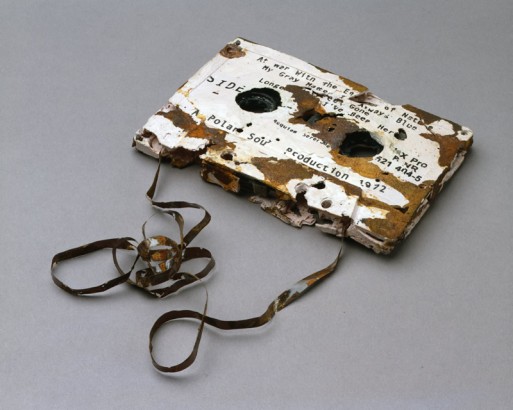
“At War With The Entropy of Nature / Ghosts Don’t Always Want To Come Back” (2002).
(Credit: Tang Museum)
Robleto’s work is “part memorial, part rescue misson: it seeks to resuscitate the material wreckage of our shared past, mixing and transforming historically-loaded artifacts and elements into regenerative works.” That’s where Patsy Cline comes in; the artist’s records were always on the turntable at Robleto’s home, and he pulled specks of Patsy’s album covers to create another sort of memorial piece, Candles Un-burn, Suns Un-shine, Death Un-dies. “Thousands of lights shine together, each one a stage light extracted from the album covers of musicians who have passed away,” says Robleto, “It’s modeled after the Hubble’s ‘Deep Field’ images, which are the earliest images of the known universe when the very first stars were just beginning to flicker into existence.”
Heaven is Being a Memory to Others is an integral part of communicating Robleto’s concepts around life, death and memory to the public. Robleto became inspired by the mysterious life of one of the Frye Museum’s founders, Emma Lamp Frye, as historians had little biographical detail on the woman. So Robleto brought Emma to life: he constructed pieces around her ‘roles’ as a lover, a bride, a mother, etc. in a way that also spoke to certain paintings within the museum’s permanent collection.
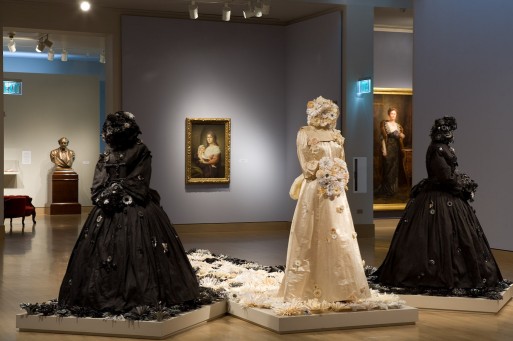
Inside the “Heaven Is Being A Memory To Others” exhibit at the Frye Museum in Seattle.
(Credit: Frye Museum)
Soldiers, country crooners, and 20th century art collectors (cue Ms. Frye) make for pretty eclectic group of inspirational sources. But it’s this very eclecticism in both subject matter and material choice that makes Robleto’s work so inclusive and meaningful. “Robleto has been composing a love song to America,” in by working with such diversity and malleability,” says a critic at Duke University, “[it’s] an extended metidation on longing and loss” that everyone can relate to.
How does Robleto’s work make you consider the relationship between life, death and memory? We look forward to your comments below.
You may like:
- Discover more about Dario Robleto on the ACME site
- The Goodbye Gallery: A Unique Space for Art
- Life & Death Silhouetted: DesignBoom’s Portrait Urn

 Artist Dario Robleto: Heaven is Being a Memory to Others
Artist Dario Robleto: Heaven is Being a Memory to Others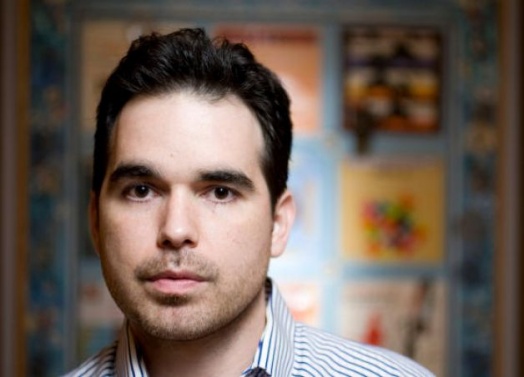



 Funeral Home Owner Chris Johnson Spending Halloween in Jail
Funeral Home Owner Chris Johnson Spending Halloween in Jail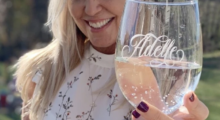
 Our Monthly Tip: Toast a Loved One with a Personalized Glass
Our Monthly Tip: Toast a Loved One with a Personalized Glass
 My Cousin’s Death Taught Me the Meaning of Life
My Cousin’s Death Taught Me the Meaning of Life














